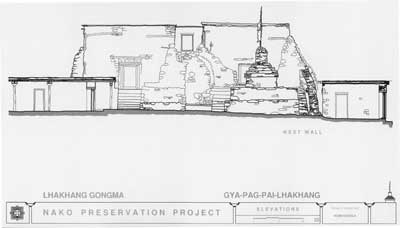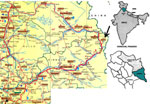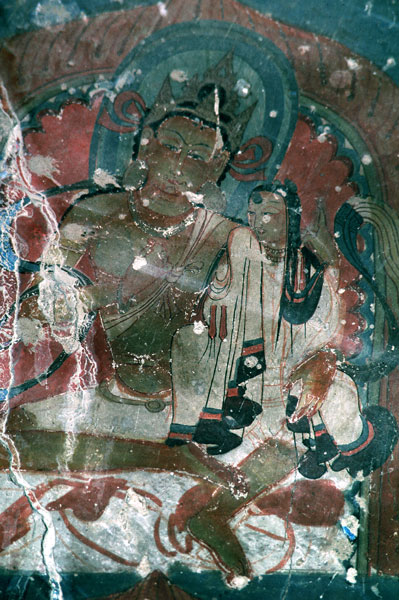
Partly due to its geographical remoteness - near the border to China / Tibet - it is only in recent decades that Nako has become a focus of scientific research.
An interdisciplinary group of international scholars, financed by the Austrian Science Fund (FWF) has documented the Nako Monuments since 1989, and published specific aspects of the art preserved in the monuments. Since 2001 this work is being continued by the Research Unit (FSP) – The Cultural History of the Western Himalayas from the 10th to the 14th century – under the direction of Univ. Prof. D. Klimburg-Salter, Institute of Art History, University of Vienna. The NAKO PRESERVATION PROJECT (N.P.P.), associated to the Austrian Science Fund Research Unit, is primarily financed by the World Monuments Fund (WMF), the Robert W. Wilson Challenge Grant, The Shelly and Donald Rubin Foundation (through the WMF), and the Circle for Tibetan and Himalayan Studies (SOAS), Dr. Ulrich Pagel, President, University of London. The work of the Nako Preservation Project is directed by the executive committee:
based in Austria:- Univ. Prof. Dr. Ernst Bacher, Chairman & Chief Conservator em., Austrian Federal Office for the Protection of Monuments and Sites
- Univ. Prof. Dr. Deborah Klimburg-Salter, Director, Institute of Art History, University of Vienna and Director, FWF/Austrian Science Fund - FSP Interdisciplinary Research Unit "The Cultural History of the Western Himalaya"
- Univ. Prof. Dr. Ernst Steinkellner, Austrian Academy of Sciences, & President of the Study Circle for Tibetan and Buddhist Studies
- Jamila Baier-Mathews, MA, Project Manager, Austrian Science Fund (FWF) - Interdisciplinary Research Unit, Coordination Project
- Countess Gabriela Schallenberg, Founder & First Vice-President of the Association "Welcome to Austria"
- H.E. Ambassador Dr. Herbert Traxl, Austrian Embassy, Bangkok, Thailand
- Dr. Jutta Stefan-Bastl, Ambassador of Austria Austrian Embassy, New Delhi
- Arch. Romi Khosla, Co-ordinator Conservation
- Dr. Kapila Vatsyayan, Founder
- Hukum Chand Negi, Representative, Nako Chug Lakhang (Buddhist Monastery) Management Committee
In summer 2002, under the expert guidance of Arch. Romi Khosla, an international team consisting of conservation architects (Sweena Berry, Rachana & Anand Viswanathan), a wall painting conservator from the Courtauld Institute of Art, University of London (Stephen Rickerby), and two art historians from the University of Vienna (Ass. Mag. Christiane Papa-Kalantari, Mag. Verena Widorn) traveled to Nako to undertake emergency protective measures of the monuments and an assessment of the site and its wall paintings. The aim of the mission was to gather information to prepare for the conservation of the buildings, wall paintings, clay sculptures and ceiling decorations.

The role of Prof. Klimburg-Salter's team was to investigate specific art historical questions relevant to the conservation of the wall and ceiling paintings, such as issues of artistic classification, and the chronological development of the monuments, their paintings and sculptures. Another major component was computer-based investigation and analysis of ongoing damage in the 4 temples within the sacred compound at Nako. The digitized documentation of the Western Himalayan Archive Vienna (WHAV) – the result of a long-term scientific field project – served as a basis for the comparative assessment of alterations during the last decade. Some recent interventions have resulted in dramatic changes, such as the new arrangement and partial removal of the original ceiling panels in the Lo-tsa-ba lHa-khang, which depict high quality textile patterns. Thanks to the documentation of the WHAV, a reconstruction of the original arrangement of the ceiling panels will be possible in the near future.
The importance of preserving the endangered cultural heritage of Nako has now been recognized both by the World Monument Fund and Icomos. The historical complex of Nako is on the list of the100 Most Endangered Sites 2002, issued each other year by the World Monuments Watch and was awarded a Wilson Challenge Grant in 2002.
